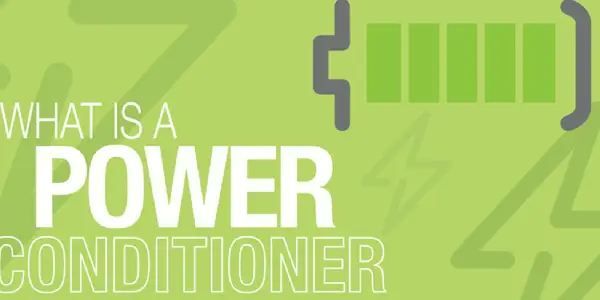
Mr. Electric explains how a power conditioner improves electrical quality for sensitive devices.
|
Looking to protect your sensitive and expensive electronics? Surge protection is a great start, but power conditioners also offer valuable protection for components in entertainment and sound systems, as well as home office devices.
What does a power conditioner do that a surge protector can’t?
Surge protectors are a great defense against damaging voltage spikes. However more than surges and spikes can effect certain sensitive electronic devices. Radio frequency interference (RFI), electro-magnetic interference (EMI) and voltage fluctuations can also effect sound, entertainment, and office devices, causing a reduction in sound and picture quality.
How does it work?
Power conditioners act as a buffer between the outlet and your system, smoothing out voltage fluctuations as well as radio and electromagnetic interference that can effect system performance. Initially used in industrial, research and laboratory applications, not long after the introduction of home computer systems, the usefulness of surge protection, uninterruptible power supplies, and (later) power conditioners were brought to light, as were the advantages of their use with other home electronics, such as entertainment and sound equipment.
Power conditioning advantages include:
Equipment protection
Protection against voltage surges through electrical lines, phone lines, coax TV inputs, and LAN connections that can result in the degradation of system performance or system failure.
Noise removal
Removal of noise in electrical lines resulting from radio and TV stations, mobile devices, motors – even high-current appliances (vacuums, refrigerators) can generate noise.
Fluctuation correction
Of voltage and waveform distortions.
How much do power conditioning devices cost?
Power conditioning devices range in price based on type, options, and quality from less than $80 to upwards of $3,000. While some come solo (and can be easily added to your existing point-of-use surge protection), others are sold in combination with point-of-use surge protection devices. Fortunately, the difference between even basic conditioning and none at all is dramatic.
Confusing options
Because they may or may not be part and parcel of surge protection, and come in multiple types, the selection of a power conditioner can be confusing. Because the right choice is essential to its end usefulness, it is essential you choose the right one for the task at hand.
Power conditioner types and limitations:
Passive-type filters
The least expensive type of power conditioner, these shunt high-frequency noise components away - through a capacitor to ground. These offer very basic noise-reduction capabilities.
Balanced transformer
Offering noise reduction superior to passive inductor-capacitor models (above), this style of power conditioner features an isolation-balanced transformer that balances AC power feed and produces noise reduction far better suited for audio and video components. Much pricier than passive-type filters, they are also larger, heavier, and noisier and offer limited power delivery due to the damping effect of the balancing transformer.
AC regenerative types
Even larger and pricier, AC regenerative type conditioners throw off a lot of heat in operation but better address the problems associated with noise in the audio and video spectrum, working similarly to a power generator to regulate AC voltage, correct waveform symmetry (distortion), and reduce or eliminate lower order harmonic noise (noise generated from the surrounding neighborhood to within your home resulting from uneven or clipped loads in the AC line) known to be at the center of these issues. These high-end conditioners use automatic voltage stabilization circuitry with a microprocessor-controlled variable transformer, delivering full, completely new AC voltage to your entertainment system regardless of fluctuations or surges that are nearly noise-free.
Contact Mr. Electric
Not sure what type of power conditioner is right for your setup? The friendly professionals at Mr. Electric® can help. Contact us today.

